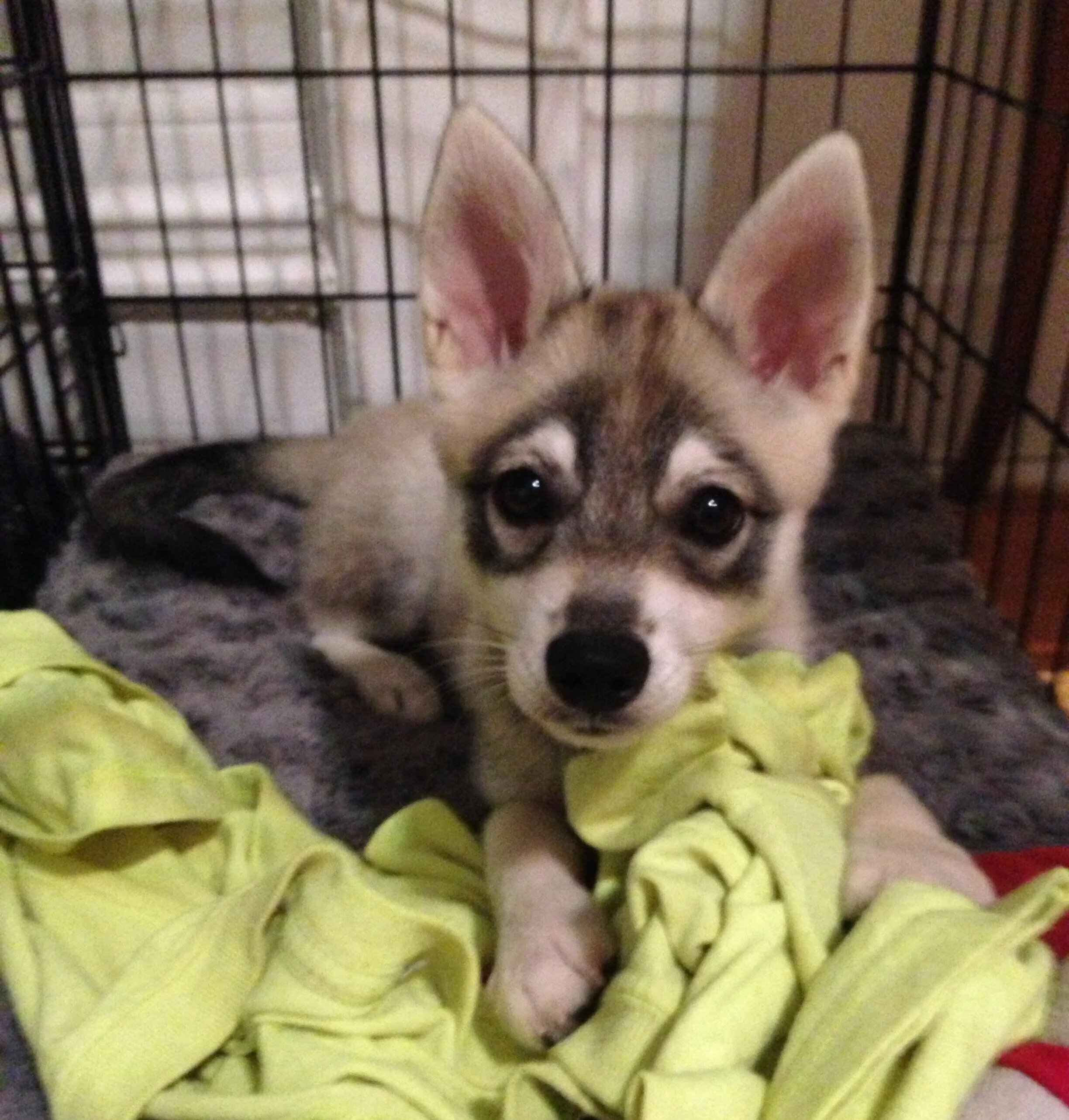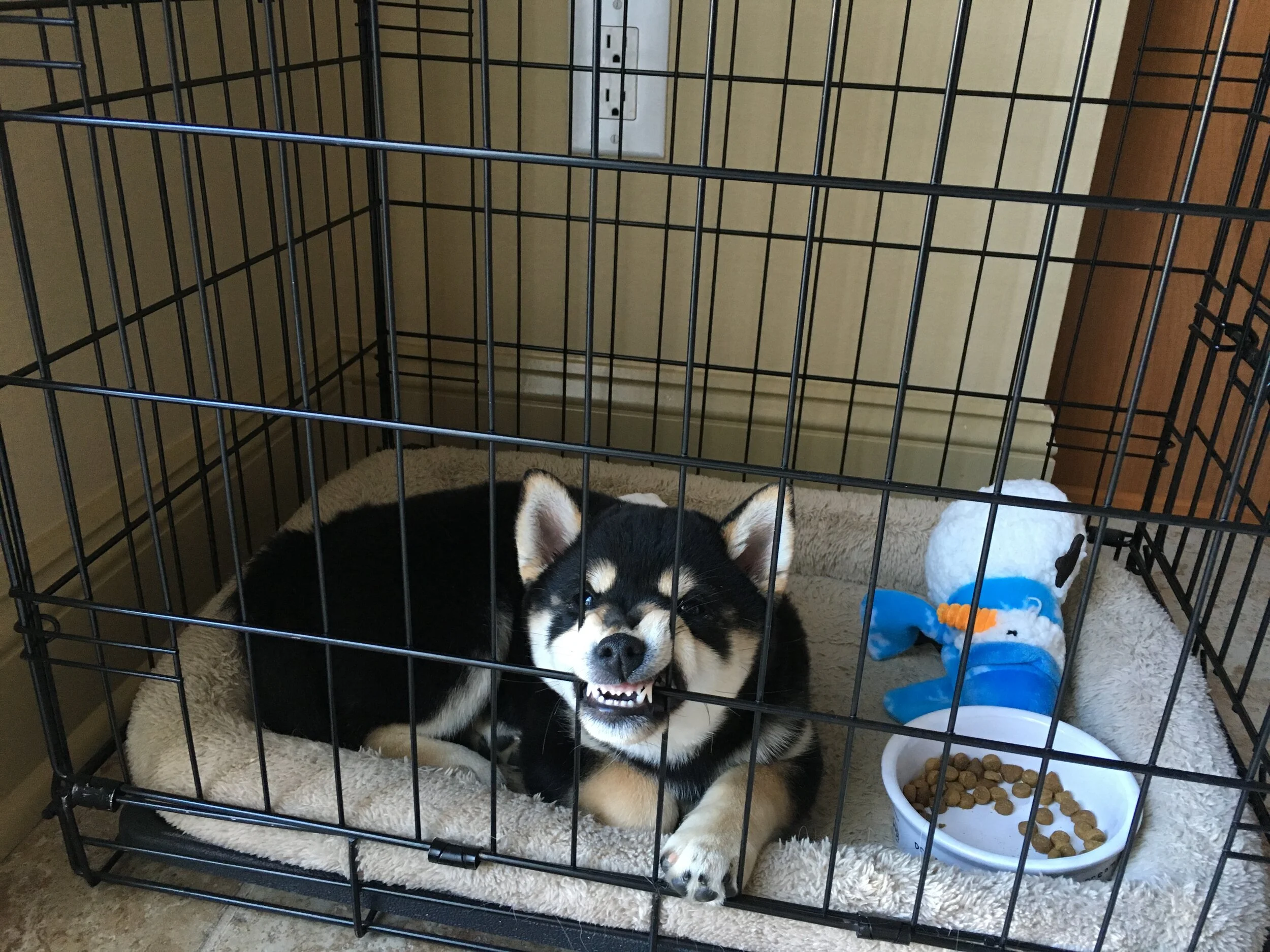Crate Training Your Pup
Barak and SoomSoom are both crate trained and, while it was admittedly a tough process to train them, crates are now a staple of our daily routine, a valuable tool for us in managing the pups, and a source of comfort for Barak and SoomSoom.
We recognize that not everyone wants to crate train their pup, but for folks who are interested and curious about how to do it, we hope that our experience can be informative and remove some of the anxiety that comes from crate training.
Benefits of crate training
Before we dive into how-to…
Crate training is possibly the best thing we’ve done for Barak and SoomSoom. Not only does it help us manage them better at home and while we’re traveling, but their crates have become a place of comfort and safety for them. Here are some of our favorite benefits -
Bed time - If you aren’t planning to have your pup sleep in bed with you, a crate is a great place for your pup’s bed. You can even toss a towel or blanket over the crate to make it feel more den-like for your pup. We love that Barak and SoomSoom are used to sleeping in their crates at night. We can take travel crates with us whenever we travel or visit with family and the pups always happily go in as they’re familiar and comfortable for them.
Potty training - The crate is amazing in helping potty train a pup. Without a crate, it’s hard to have eyes on your pup at all times. A crate allows you to consistently manage their movement and prevent them from turning your favorite shag rug into their new pee spot.
Safety & comfort - Our pups love their crates and will go to their crates on command. It’s awesome to know that we have a comfortable and beloved place to send them when we need them safely out of the way. The pups also go to their crates on their own with their favorite treats and toys, when they want to relax, or need a little extra TLC. Barak in particular goes into his crate when he feels sick, which is a great way for us to understand how he’s feeling.
Cute factor - Crate training your pup is an excuse to pile a ton of toys in your pup’s crate and watch them burrow around as if they were in a ball pit. It’s adorable, try it!
Training Tips
Consistency & patience
Crate training is all about consistency. If your pups are like Barak and SoomSoom, they’re going to be very vocal when you first introduce the crate. This can be uncomfortable, not just on the ears, but also on the heartstrings (puppies in particular manage to pierce with both their shrieks and their puppy dog eyes). But be strong! Wait until your pup calms down and is quiet before letting them out of their crate, lest they learn that shrieks = freedom.
Make the crate a Happy & safe space
You want your pup to view their crate as a safe space, so it’s important to build positive associations with the crate by giving your pup treats inside their crate or letting them play with toys in it. When crate training, always give your pup a reward when putting them in their crate (a treat dispensing toy full of goodies or a fun new toy - our favorite treat dispensing toys are this kong and this ball). You can also occasionally put treats into their crate for your pup to spontaneously discover on their own. Some people even feed their pups exclusively in their crates at first - this can help build your pups’ sense that their crate = good times!
We’d also recommend avoiding using the crate as punishment, especially at first. You don’t want their crate time to become associated with you being upset or angry, so if your pup chews up your shoes, it’d be better to redirect their attention to an appropriate chew toy rather than send them to their crate.
Tire them out
It’s best to have your pup be tired before you put them into their crate. A tired pup is more likely to take advantage of the crate time to nap rather than spend the entire time screeching at you. Try spending a few minutes training your pup (mentally tired them out) or playing with them (physically tired them out) before putting them into their crate with their goodie.
Working up crate time
If you ever want to travel with your pup or have an easy way to manage your pup when the electrician comes in to fix your broken light, you’ll likely want your pup to be comfortable spending daytime hours in their crate. Work on building your pup’s love of the crate in small increments during the day. Let them enjoy a snack or a 10-15 minute play session with a kong alone in the crate. This will (1) make sure your pup doesn’t just view their crate as a place where they go for bedtime, and (2) help build both their tolerance for crate time and create those positive associates that will eventually make the crate a place your pup will go when they’re just looking to do a snoozle.
Use the crate strategically
Crate time can be used to help with potty training as you can use it to restrict movement when needed. For example, when potty training, if Barak or SoomSoom didn’t pee during a walk, we would put them in their crate for 20 minutes and then try another outing. This helped prevent accidents and helped us teach them that they should potty outside.
Expanding beyond the crate
One problem dog owners face when crate training is how to progressively give your pup access to the house. Unlimited access all at once (even in a 1-bedroom apartment, trust us) is a recipe for surprise poops, puddles of pee, and turned over trash cans. When Barak and SoomSoom were pups, we used a playpen in addition to their crates to help control their gradual exploration of their new home.
If you have the space and are able to, get a gate or fence that you can put around your pup’s crate (this is the one we used - you can get extra panels to make it larger!) Slowly widen the enclosure as your pup gets more confident and you see that they're able to handle new spaces without accidents. You can also move the crate and outer enclosure to other rooms if you want to introduce your pup to your house one room at a time. This will help them understand that the spaces are part of their new home (and therefore not part of their new bathroom).
Conclusion
If it isn’t obvious by now - we’re big fans of crate training. We know that not everyone needs or wants to do it, but it has been amazing for Barak and SoomSoom and we highly recommend it. If you decide to crate train, you will have times when you get frustrated or think that it is hopeless (these often come in the middle of the night when your pup is on their second hour of whining). Just make sure to -
Be consistent and patient
Make the crate a happy & safe space
Tire your pup out
Work up crate time
Use the crate strategically
Expand beyond the crate
And remember - the hard times will pass and you’ll soon have a pup who loves their crate! With that, we’ll leave you with this video of Barak, determined to pull his kong wobbler into crate!




